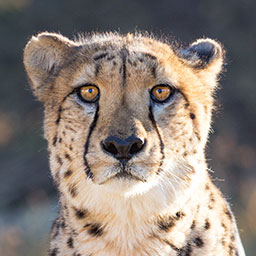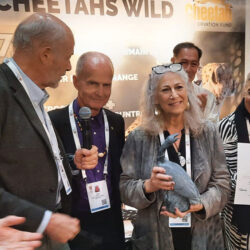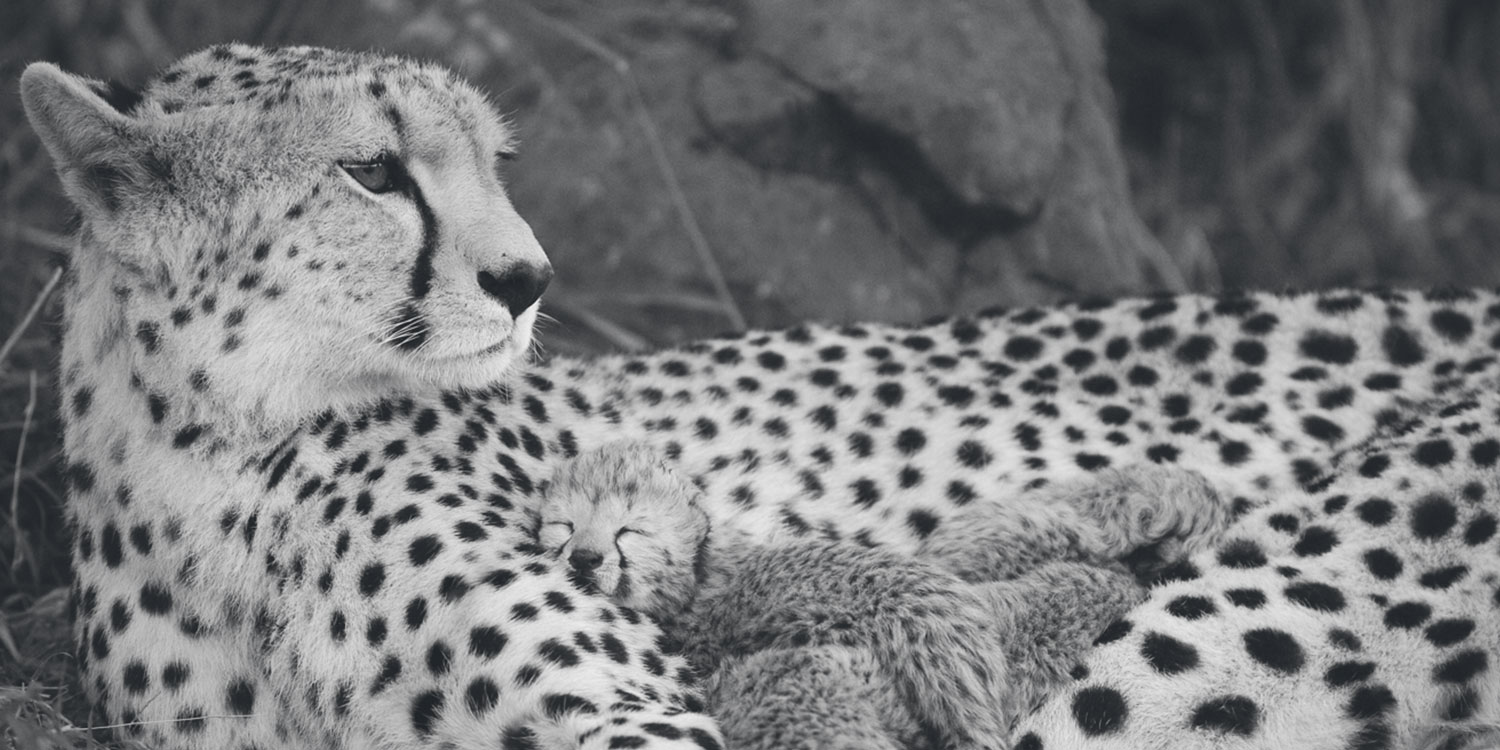Reducing Predator Conflict During Calving Season
-

- by CCF Staff November 7, 2011
FOR IMMEDIATE RELEASE: November 7, 2011
REDUCING PREDATOR CONFLICT DURING CALVING SEASON
CONTACT: Dr. Laurie Marker cell: 081-1247887 or Gail Potgieter – 067 306 225
Otjiwarongo, Namibia – This time of the year marks calving season on the Namibian farmlands. Unfortunately, each year some farmers lose calves and small stock to a variety of predators that share these farmlands, including jackal, caracal, cheetah and leopard.
The Cheetah Conservation Fund (CCF) has been working with the farming community for nearly 20 years assisting farmers to reduce predator and livestock conflict. Over the years, CCF staff have interviewed hundreds of Namibian farmers, many of whom have found that livestock losses can be reduced by incorporating simple management techniques into farming practices. Many of these farmers indicate that not only the cheetah, but other predators are no longer a problem when they employ non-lethal predator control techniques.
Often high losses occur in heifer herds during the beginning of the calving season. Heifers experiencing birthing problems can result in weak calves that become easy prey for a predator. Calves might also be vulnerable to attack when heifers are inexperienced at protecting their offspring from predators. The following management suggestions to reduce livestock loss have been shared with CCF by the farming community:
- Observe heifers closely by bringing them closer to the homestead during calving time so assistance can be given if birthing is difficult.
- Keep a few older, experienced cows in the heifer herd, as the older cows will protect the calves and teach the heifers.
Donkeys are fierce protectors. - Keep a few cows or oxen with horns in the calving herd to help protect calves, as they know they have horns and know what to do with them.
- Keep cows and calves closer to the homestead for up to one month after birth. However, if this is problematic due to limited grazing, maintain the grazing in closer camps during calving times.
Often it is the same cow losing its calf to predators.
- Keep high concentrations of cattle in camps, and rapidly rotate them through camps to help reduce losses. This system mimics the natural cycle of large migrating herds of game species (i.e. wildebeest) and brings together high numbers of cows with calves, which increases the protectiveness for all the calves.
- Keep calving cows out of camps with high densities of aardvark holes, as calves are known to fall into these holes and predators are often blamed for the loss.
- Raise aggressive breeds of cattle such as Brahman, Afrikaner, Nguni, or a cross with one of these breeds.
Livestock losses to predators are higher where natural prey is scarce.
Loss of small stock due to predators can also be reduced. Farmers that employ herders to protect small stock – sheep and goats – have fewer problems. Kraaling herds at night, lambing camps, lighted kraals at night and kraals near the house have all proven to reduce losses. In addition, CCF promotes the use of a specialised breed of Livestock Guarding Dog (Kangal and Anatolian Shepherds) to guard small stock, and has found that farms employing one of these dogs have significantly reduced their livestock losses. Guarding dogs protect the flocks; they do not herd the flocks. Predators avoid areas where guarding dogs are patrolling or barking loudly.
Cheetahs move in and out of game farms through warthog holes. CCF recommends maintaining fences and keeping holes closed to keep cheetahs out. It is also important to maintain a sustainable wild prey population as cheetahs prefer to hunt wild game over livestock –during the rainy season, cheetahs and other predators also follow the wildlife to where the grass is greener. And since cheetahs usually select the weaker, slower wild game, they help maintain a healthy wildlife population. Cheetahs also feed the veld. When they hunt, other carnivores such as jackal, leopard, birds of prey and vultures will also feed off a cheetah kill and will not need to prey on domestic animals.
It is important to remember that cheetahs are not dangerous – they believe in flight vs fight, and do not like human disturbance. Also, removal of cheetahs causes a vacuum effect where open territories bring other cheetahs from far and wide since their home ranges are over 1500 km2.
When livestock losses are experienced, some farmers use cage traps to try and remove the offending individual predator. When setting a trap, it is important to take the following precautions:
- Check the traps at least once a day to minimize the suffering of the trapped individual.
- Place the trap in a location where it will be shaded the whole day. On hot days, animals that are caught in traps that are not shaded could die of heat exhaustion.
- Make some provision for the release of non-target animals. In some cases, the non-target animals are dangerous to release – animals like baboons, honey badgers and leopards (in cases where the leopard is not the target animal) will attack when they feel cornered. Thus, release mechanisms need to be designed so that the cage can be opened from a vehicle parked at a safe distance.
Remember that CCF and other members of LCMAN are available to give information on the correct design of cage traps to allow for the safe release of non-target animals.
If you are having predator problems and would like more detailed information, please contact CCF. Also, if you catch a cheetah, please contact CCF at 067-306225.
Editor’s notes:
The Cheetah Conservation Fund, a Namibian non-profit trust, is dedicated to the long-term survival of the cheetah and its ecosystems.
Since 1990, the organisation has developed education and conservation programmes based on its bio-medical and ecological cheetah research, published scientific research papers and has presented educational programmes to more than 350,000 outreach school learners, donated nearly 400 livestock guarding dogs to commercial and communal farmers as part of the CCF innovative non-lethal livestock management programme, and has established a cheetah genome resource bank of cheetah sperm, tissue and blood samples.
Research into cheetah biology and ecology has greatly increased our understanding of the fastest land animal and education programmes for schools and the farming community help change public attitudes to allow predator and humans to co-exist. However, despite the many successes of CCF programmes, the cheetah is still Africa’s most endangered big cat with ~10,000 cheetahs remaining.
Cheetah populations continue to decline throughout their range in Africa due to habitat and prey loss. This situation is exacerbated in poor rural areas where subsistence farming practices can lead to increased farmer-cheetah conflict, with serious consequences on both sides. Cheetah survival is therefore dependent on educated people helping subsistence farmers to improve their management practices, for the benefit of all. CCF encourages communities to take a unified and systematic approach to cheetah conservation including research, monitoring and conflict mitigation measures.
For more information:
Cheetah Conservation Fund
PO Box 1755, Otjiwarongo, Namibia
Tel: +264 (0) 67 306225
Fax: +264 (0) 67 306247
E-mail: [email protected]
Website: www.cheetah.com
Related Reading


